| Lesson 4 | One-to-one marketing |
| Objective | The power of personalization and portals. |
One-to-one Marketing
When a prospect walks into a retail store, the seller needs to have a plan. Do you pounce on the potential buyer with a hard-sell stance?
Do you let them wander the store because you do not want to annoy them? Probably both of these extremes are poor choices.
- Personalization and Portals:
In most scenarios, you want to watch the prospective buyer's behavior and engage them one-to-one with just the right touch and just the right information. Simulating this selling technique is what personalization and portals are all about. Many first generation e-commerce sites do not offer personalization and portals because represent rather sophisticated approaches to e-commerce site building. - Cookies and Self-Profiling:
When you personalize a site, you need to know who your customer prospect is. This is often done with cookies. Another technique, however, that enables you to capture customer/prospect demographics is known as profiling. Profiling means you ask a site visitor to identify themselves. You can encourage visitors to self-profile by offering free information, free products, or special membership access to a portion of the site, etc. If the visitor gets a benefit from identifying themselves, they will. When they profile, you may ask them to identify their address or a zip code, what they do for a living, how much money they make, how often they use the Web, etc. Each time thereafter you want to have the user identify themselves again, usually through a userid and/or password. In some cases, you can offer visitors a portal user interface (or portal view) after they profile themselves. The portal user interface enables them to control the content they will see, or at least the classes of content they will see, whenever they visit your site. - Tracking Behavior of your Customers:
Once you know who your customer is, you need to track their behavior. What portions of your e-commerce site do they visit?
Which banner ads do they click on?
What products did they almost buy (backed out just before closing the purchase)? Once you know the behavioral pattern of a particular user, you can create personalized content that will appeal to their tastes.
Personalized Content
If, for example, the visitor viewed that blue denim jacket on each of their last three visits, maybe on their next visit you want to "pop-up" a special on that jacket to get them to buy. If your visitor always shows interest in certain jazz CDs, you might start offering content about jazz festivals in your prospect's part of the country plus information about the latest CD releases of those playing at the festival. Personalized information can be more useful to people than generic information. However, engineering a dynamic site can produce less-than-satisfactory results if the basic structures and designs are not in place first. Today, the startup is bringing its personalized content app to Android phones with a new app and is adding support for Google Buzz.
Once you sign in with your Twitter, Facebook, Buzz, and Google Reader accounts, serve the content in your social streams in one interface.
Using the company’s ‘digital intuition’ technology, you can analyze which types of content and sources you click on the most and then automatically surface similar content as you interact with the app.
- Technological Foundations:
The technological foundations of e-commerce are largely hidden, but they are the base on which electronic commerce is built.
Kalakota and Whinston use the analogy of a traditional transportation company to describe the complexity of the network and how the different components that make up the technology infrastructure are interlinked.
- The network infrastructure is like the network of roads that are interconnected and are of different widths, lengths and quality, for example, the Internet, local area networks, intranets. Network infrastructures also take different forms such as telephone wires, cables, wireless technology (such as satellite or cellular technology).
- The publishing infrastructure (including the World Wide Web, Web servers) can be seen as the infrastructure of vehicles and warehouses, which store and transport electronic data and multimedia content along the network. Multimedia content is created using myriad tools such as HTML and JAVA. This content can be very different with varying degrees of complexity similar to different vehicles travelling on the roads. For example, text only, or more complex is an application, such as a computer game, containing audio, video, graphics and a programme.
- Messaging and information distribution infrastructure are the engines and fuel, which transport the data around the network. Once the multimedia content is created, there has to be a means of sending and retrieving this information, for example by EDI, e-mail, Hyper Text Transfer Protocol.
- Once content and data can be created, displayed and transmitted, supporting business services are necessary for facilitating the buying, selling and other transactions safely and reliably. For example, smart cards, authentication, electronic payment, directories/catalogues.
Portals require Marketing Involvement
Portals and personalization require marketing involvement. Portals and personalization offer compelling content to drive a one-to-one marketing relationship. This task ultimately falls into the realm of marketing campaigns. Portals, personalization, and one-to-one marketing on the Web provide the marketer with the electronic means of creating leads and making offers, just like any other sales channel. Ultimately, however, you should exhibit some care in e-commerce one-to-one marketing. Marketing should coordinate campaigns throughout all
sales channels to prevent channel conflict and pricing inconsistencies. Below are a series of images which discuss various forms of e-commerce advertising, which can be made part of an electronic campaign using portals and personalization.
Various Forms of e-commerce Advertising
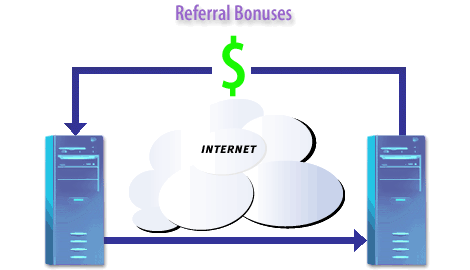
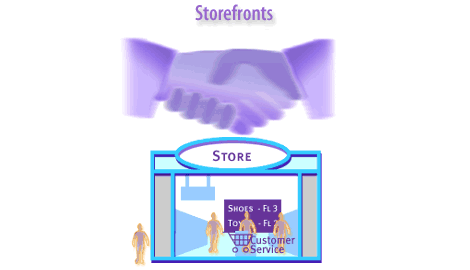
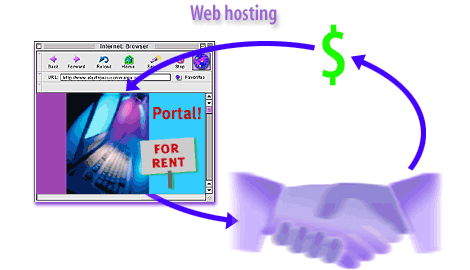
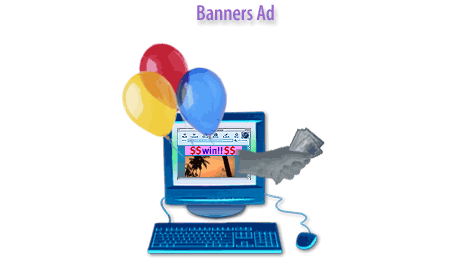
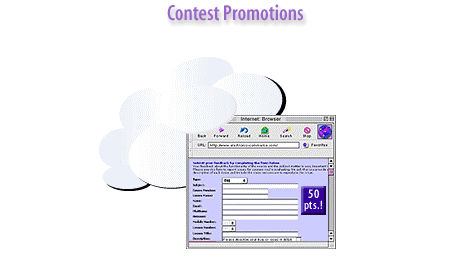
One to one Marketing
One-to-one marketing (sometimes expressed as 1:1 marketing) is a (CRM) customer relationship management strategy emphasizing personalized interactions with customers. The personalization of interactions is thought to foster greater customer loyalty and better return on marketing investment. The concept of one-to-one marketing as a CRM approach was advanced by Kotler Marketing.
Only the term is new and the approach is almost as old as commerce itself. In the past, for example, proprietors of a general store would naturally take a one-to-one approach, remembering details about each customer's preferences and characteristics and using that knowledge to provide better service. One-to-one marketing seeks to reinvest marketing with the personal touch absent from many modern business interactions.
Advertisers have discovered that contests help limit false information submitted by consumers; many who might submit false information to try a service are motivated to submit true data in case they win. In the next lesson, you will learn about e-procurement and supplier enablement.
The following paragraph discusses portals and personalization to build a customer base.
Only the term is new and the approach is almost as old as commerce itself. In the past, for example, proprietors of a general store would naturally take a one-to-one approach, remembering details about each customer's preferences and characteristics and using that knowledge to provide better service. One-to-one marketing seeks to reinvest marketing with the personal touch absent from many modern business interactions.
Advertisers have discovered that contests help limit false information submitted by consumers; many who might submit false information to try a service are motivated to submit true data in case they win. In the next lesson, you will learn about e-procurement and supplier enablement.
The following paragraph discusses portals and personalization to build a customer base.
Advanced Digital Architectures
Portals and Personalization
Portals and personalization rely heavily on the combination of **profiling**, **portal user interface**, **tracking**, and **cookies** to create tailored experiences for users. Here’s how each attribute contributes to this process:
-
Profiling
- Purpose: Collecting user information during sign-ups or through membership activities.
-
Role in Personalization:
- Allows portals to gather demographic, preference, and behavioral data about users.
- Enables the portal to segment users into different groups based on shared characteristics.
- Supports delivering personalized content, recommendations, and services based on the user's profile.
-
Example:
- A news portal asks users to select their preferred news categories (e.g., sports, politics, technology) during registration, which then drives the content displayed on their homepage.
-
Portal User Interface
- Purpose: Allows users to customize the way they interact with and view the portal.
-
Role in Personalization:
- Empowers users to define their experience by selecting the type and arrangement of content.
- Can dynamically adapt based on the user’s preferences and interactions.
- Enhances user engagement by providing a sense of control over their experience.
-
Example:
- A user on a dashboard portal rearranges widgets to prioritize financial market updates while minimizing sections on entertainment.
-
Tracking
- Purpose: Observing and analyzing user behavior, such as page visits, clicks, time spent, and interactions.
-
Role in Personalization:
- Helps identify patterns and preferences to deliver more relevant content or offers.
- Provides insights into user needs and interests that may not be explicitly stated during profiling.
- Enables predictive analytics to anticipate what the user might want next.
-
Example:
- An eCommerce portal tracks that a visitor frequently views gaming laptops and subsequently highlights related products and accessories in their recommendations.
-
Cookies
- Purpose: Storing information about user interactions and preferences on the user’s device.
-
Role in Personalization:
- Provides a mechanism for retaining user preferences between visits, even if the user doesn’t sign in.
- Facilitates session management by remembering user login details or shopping cart contents.
- Works in conjunction with tracking to refine personalization without requiring constant user input.
-
Example:
- A shopping portal remembers a visitor's cart items and preferred language settings through cookies, ensuring a seamless experience when they return.
-
Integrated Functionality
- Profiling provides the foundational data for creating user segments and tailored experiences.
- The portal user interface acts as the interaction layer where personalization manifests.
- Tracking continuously updates the system about user behavior, refining the personalization process in real-time.
- Cookies ensure consistency and continuity, maintaining user-specific experiences across sessions.
-
Example Workflow
- A user signs up on a fitness portal (profiling) and selects their fitness goals (e.g., weight loss).
- The portal displays widgets and articles related to these goals on the dashboard (portal user interface).
- The portal tracks that the user frequently reads articles on healthy diets (tracking) and adjusts recommendations to highlight meal plans.
- On their next visit, the portal remembers their preferences and previously viewed content using cookies, offering a seamless, personalized experience.
Business-to-Business (B-to-B)
The exchange of products, services or information between business entities.
According to market research studies published in early 2000, the money volume of B-to-B exceeds that of B-to-C by 10 to 1.
The Gartner Group estimates B-to-B revenue worldwide will be $7.29 trillion by 2004, a compound annual growth of about 41 per cent.
- Web-based B-to-B includes:
- Direct selling and support to business (as in the case of Cisco where customers can buy and also get technical support, downloads, patches online).
- E-procurement (also known as industry portals) where a purchasing agentcan shop for supplies from vendors, request proposals, and, in some cases, bid to make a purchase at a desired price. For example the autoparts wholesaler (reliableautomotive.com); and the chemical B-to-B exchange (chemconnect.com).
- Information sites provide information about a particular industry for its companies and their employees. These include specialised search sites and trade and industry standards organisation sites. E.g. newmarket makers.com is a leading portal for B-to-B news.